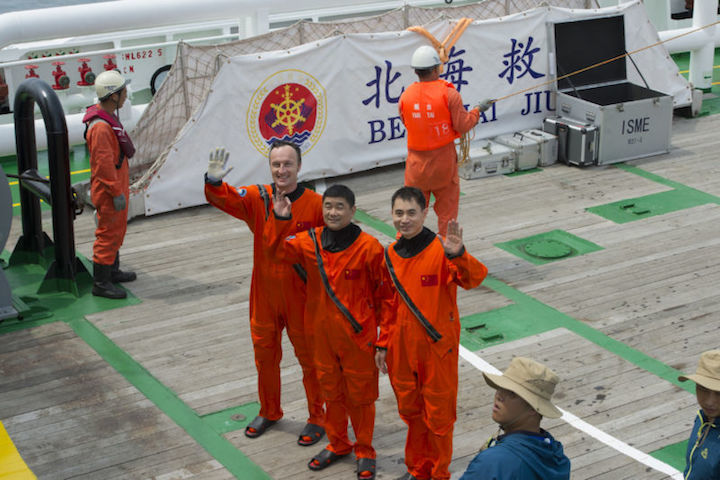18.07.2018

ESA astronaut Matthias Maurer joined Chinese colleagues in Yantai, China, to take part in their sea survival training on August 19, 2017.
-
This week, the European and Chinese space agencies held a workshop in Amsterdam to discuss cooperation between Europe and China on lunar science missions. The meeting comes as Europe seems increasingly content to work with China on spaceflight programs.
Although the meeting is not being streamed online, space systems designer and lunar exploration enthusiast Angeliki Kapoglou has been providing some coverage of the meeting via Twitter. Among the most interesting things she has shared are slides from a presentation by Pei Zhaoyu, who is deputy director of the Lunar Exploration and Space Program Center of the China National Space Administration.
Overall, Pei does not appear to be a fan of NASA's plan to build a deep space gateway, formally known as the Lunar Orbital Platform-Gateway, at a near-rectilinear halo orbit. Whereas NASA will focus its activities on this gateway away from the Moon, Pei said China will focus on a "lunar scientific research station."
Another slide from Pei offered some thoughts on the gateway concept, which NASA intends to build out during the 2020s, delaying a human landing on the Moon until the end of the decade at the earliest. Pei does not appear to be certain about the scientific objectives of such a station, and the deputy director concludes that, from a cost-benefit standpoint, the gateway would have "lost cost-effectiveness."
The Trump administration and the US aerospace contractor community has generally fallen in line behind the gateway concept, stating that it will help NASA prove out the technologies it needs for a long-term, sustainable deep space exploration program for humans that would eventually include landings on the Moon and Mars.
However, some critics have suggested that the gateway will only serve to delay NASA astronaut activity on the Moon. Moreover, they're concerned that the gateway, situated in its distant orbit around the Moon, was specifically engineered to give NASA's Space Launch System rocket and Orion spacecraft a place to go. (This rocket, with a limited upper stage, and spacecraft, with a meager service module, can't actually fly into a significant gravity well and return to Earth.)
So far, NASA has yet to finalize commitments with Europe, Russia, or other International Space Station partners on contributions to the gateway. While European officials are interested, it seems like they may also be willing to go along with China if that country has a more direct plan to land humans on the Moon.
Quelle: arsTechnica
